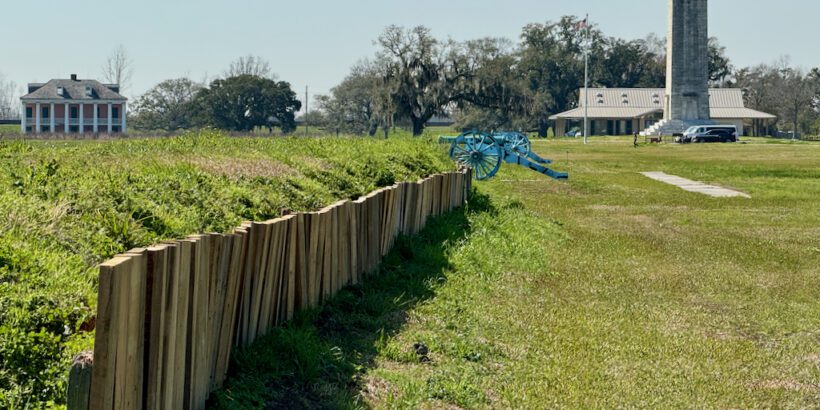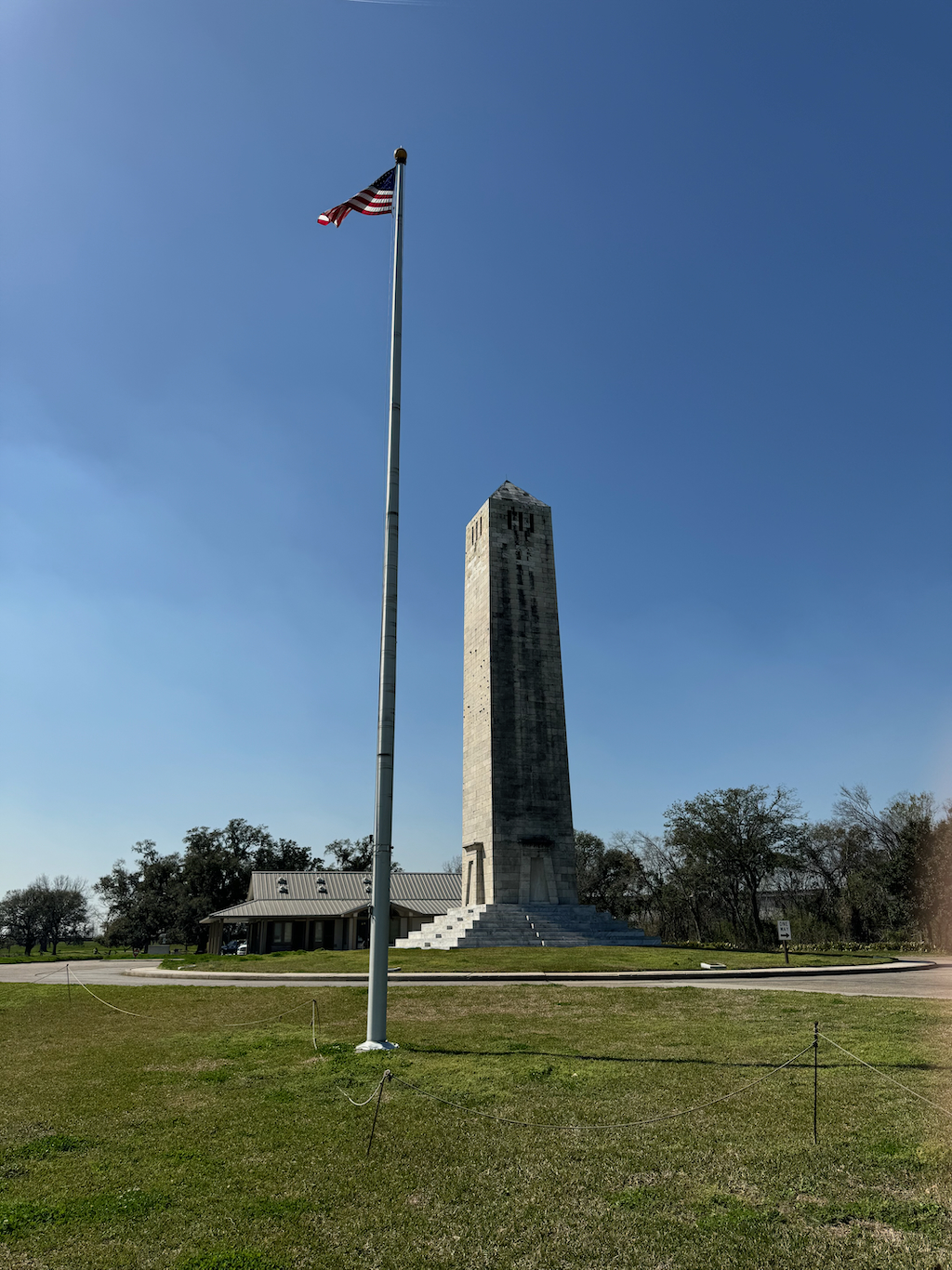New Orleans boasts a wealth of historical sites, buildings, and museums, among which the Chalmette Battlefield stands out as a must-visit destination.
This site witnessed one of the most significant battles in American history, famously known as the Battle of New Orleans.
In this article, I’ll provide you with everything you need to know to explore this iconic location and delve into its rich historical significance.
Table of Contents
Chalmette Battlefield: Need to know
Background/history:
- Site of the Battle of New Orleans (War of 1812)
- The US won the battle decisively on January 8, 1815 and the victory had a major impact on shaping US culture going forward
What to see and do:
- Reconstructed ramparts and canons allow you to re-live the history of site
- 100-foot tall monument tower completed in 1908
- Malus-Beauregard plantation style house (built after the war)
- Visitor center and small museum on-site offers videos and artifacts that tell the story of the battle
- National Cemetery with more than 14,000 gravesites of veterans of the War of 1812, Civil War, Spanish-American War, World Wars I and II, and the Vietnam War
- 1.8 mile walking loop if the weather is nice and plan on a visit of 1.5 to 2 hours
- Ranger talks offered daily at about 2:45 p.m (verify)
Where is it?
- Chalmette Battlefield is located 15 minutes from the French Quarter in Chalmette.
Admission
- Free to visit
- Usually open 9:30am to 4:30pm (hours here)
- Riverboat paddlewheeler cruise (the Creole Queen) makes a stop here
The Battle of New Orleans history
The Battle of New Orleans was an engagement in the War of 1812 and saw a diverse coalition of American forces defending the city against the British onslaught on January 8, 1815.
This eclectic mix included regular army soldiers, militia from various states, free African Americans, Creoles, and even pirates led by Jean Lafitte, all united in defense of their city.
General Andrew Jackson led the American forces, strategically utilizing the natural terrain of swamps and marshes to construct ramparts and earthworks around the Chalmette Plantation.
The ramparts, strategically positioned along the battlefield, served as defensive positions from which American riflemen unleashed devastating volleys of accurate fire upon the advancing British forces.
This, coupled with the difficult terrain, slowed the progress of the British and made them vulnerable to American counterattacks. Despite being outnumbered, the American defenders effectively nullified the numerical superiority of the British army through their strategic use of fortifications and terrain.
On the opposing side, the British, led by General Edward Pakenham, employed traditional European military tactics, including frontal assaults. However, these tactics proved ineffective against the well-entrenched American defenders and the deadly accurate fire from their riflemen and cannons.
The British suffered significant casualties, with an estimated 2,000 killed, wounded, or captured, including the loss of General Pakenham himself, while the Americans suffered relatively few losses (perhaps around 70).
The Battle of New Orleans ultimately ended in a resounding victory for the United States, solidifying Andrew Jackson’s reputation as a military hero and boosting American morale in the final days of the War of 1812.
Although the Treaty of Ghent had been signed the war was not technically over and this battle had a profound impact on US culture.
The decisive American triumph at the Battle of New Orleans quickly became emblematic of American democracy prevailing over European aristocracy.
In fact, this victory was once celebrated as a national holiday on January 8, akin to the Fourth of July, symbolizing American pride and resilience for decades to come.
Related historical sites:
- Fort Ticonderoga Review: Sites Not to Be Missed!
- Exploring Fort Mackinac’s Rich History & Firing the Canon!
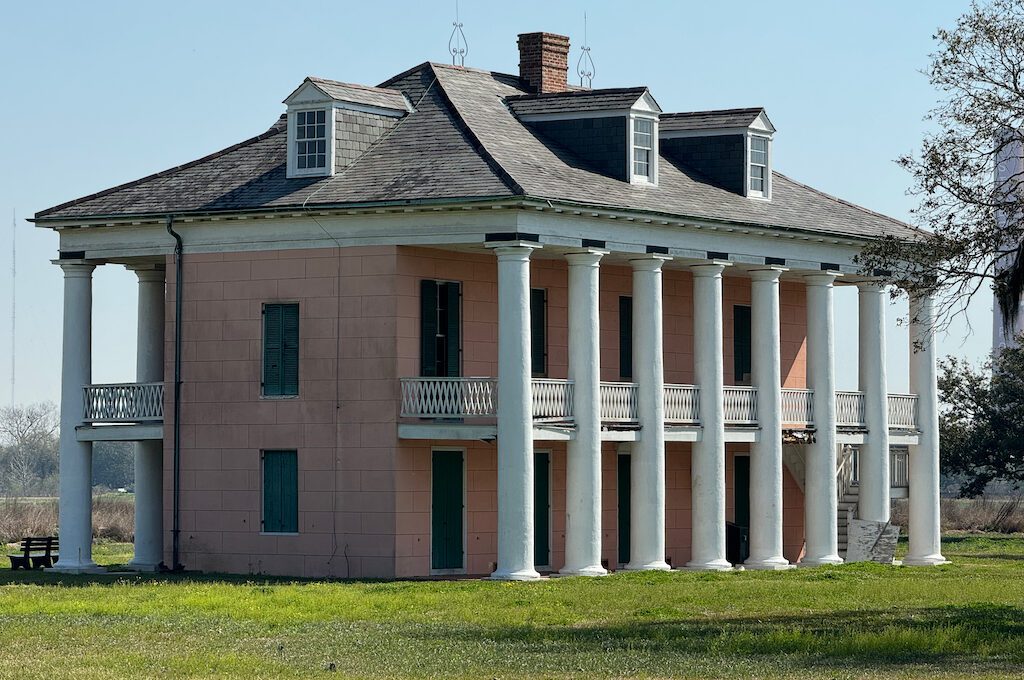
Visiting the Chalmette Battlefield
We arrived one morning in late February, greeted by clear skies and fantastic weather, which greatly enhanced our experience. Given New Orleans’ propensity for heat, visiting during one of the milder seasons can make for a much more pleasant trip here.
We parked our car near the monument and proceeded to enter the visitor center.
Inside, we found a small museum featuring informative videos about the war. I highly recommend checking them out as they offer fascinating insights into the British strategies and help you grasp the terrain’s layout, allowing you to envision the historical events more vividly.
The museum also houses intriguing artifacts including weapons, uniforms, and other historical items worth exploring. Although relatively small, the museum doesn’t require much time to navigate. Nonetheless, I highly recommend beginning your visit there to gain a deeper appreciation for the historical context of the site.
Tip: For more cool Battle of New Orleans artifacts, visit the Cabildo Museum in the French Quarter
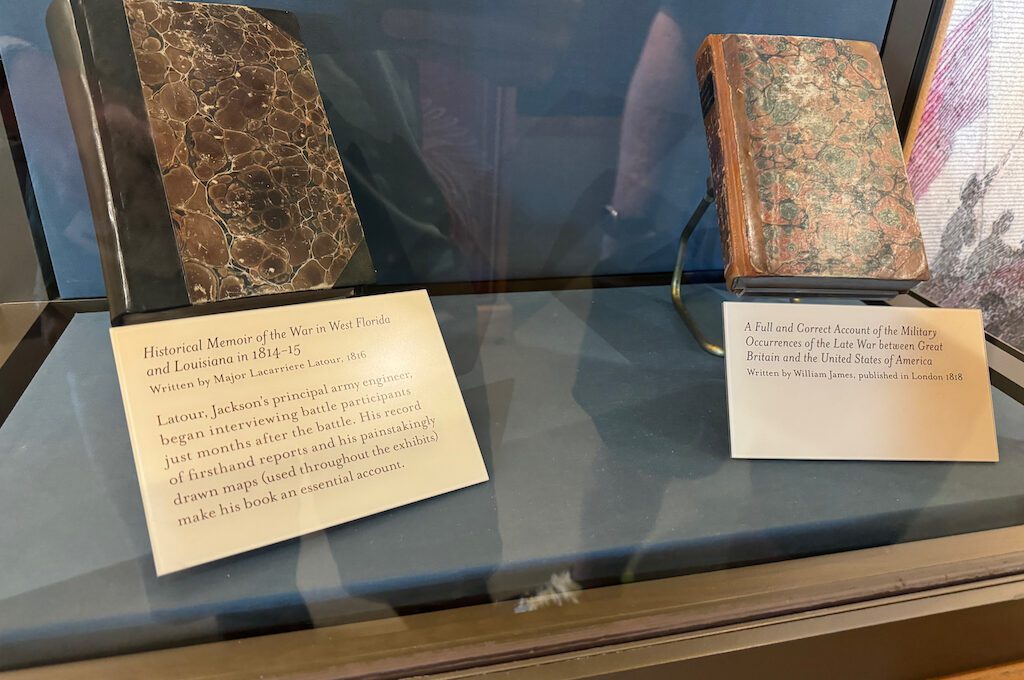
We opted to embark on the 1.8 mile loop around the battlefield, immersing ourselves in the scenic surroundings and it took one hour.
Along the way, we encountered majestic southern live oak trees, offering inviting spots to relax and seek shade from the sun. Additionally, informative interpretive panels dotted the landscape.
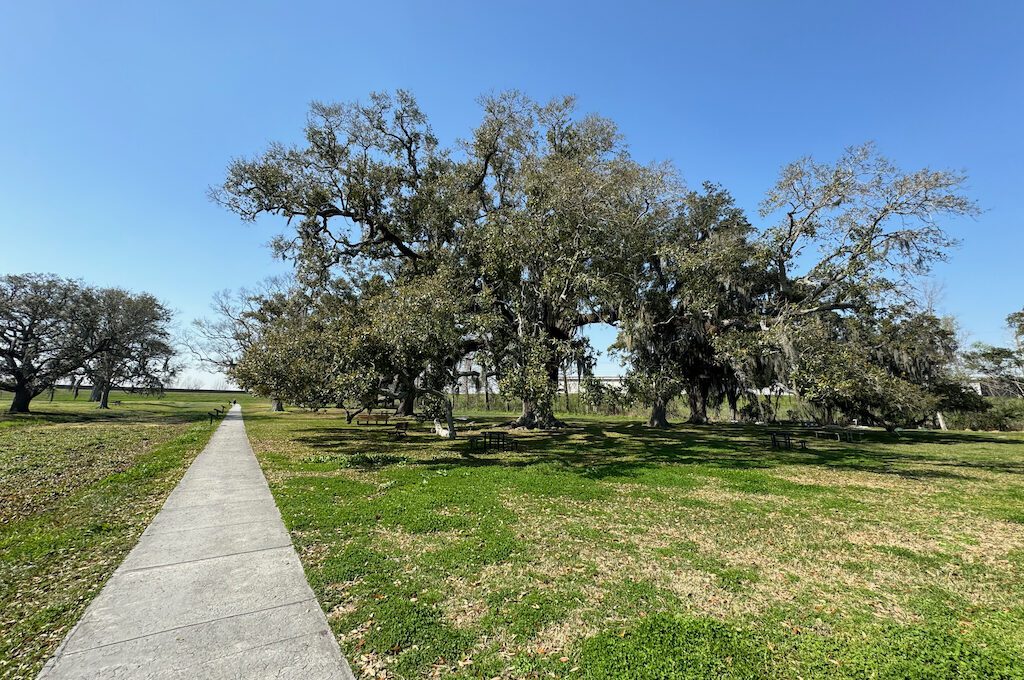
Venturing further, we made our way to the Mississippi River, where a trail system runs along the levee. Strolling along this path, we enjoyed watching boats navigate the river, adding a touch of serenity to our exploration of the historic area. This is also where some of the British troops attempted to attack (Rennie’s attack).
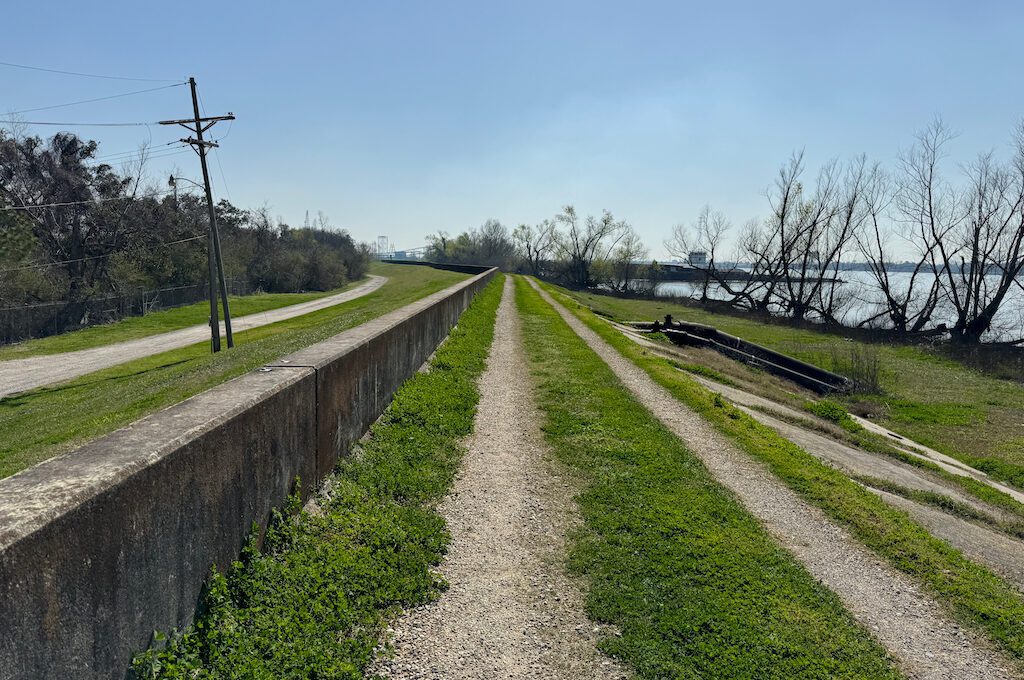
In this area, you’ll find the Creole Queen ship dock, offering boat tours that double as historical excursions, ferrying you to the battlefield and providing a unique perspective on its significance. Tickets are about $40 with no lunch and just over $60 with lunch.
If you’re intrigued by history, I highly recommend considering this option for a fascinating exploration. Alternatively, like us, you can enjoy a leisurely stroll along the riverbank, soaking in the scenery at your own pace.
We then came across the Rene Beauregard House, which was built after the war.
It’s known for its connection to Confederate General P.G.T. Beauregard and it was his son, Rene Toutant Beauregard, who lived in it from 1880 to 1904. It’s a great example of a Louisiana plantation house of the ante-bellum period. Access to the interior is sometimes granted so be sure to call ahead if that interests you.
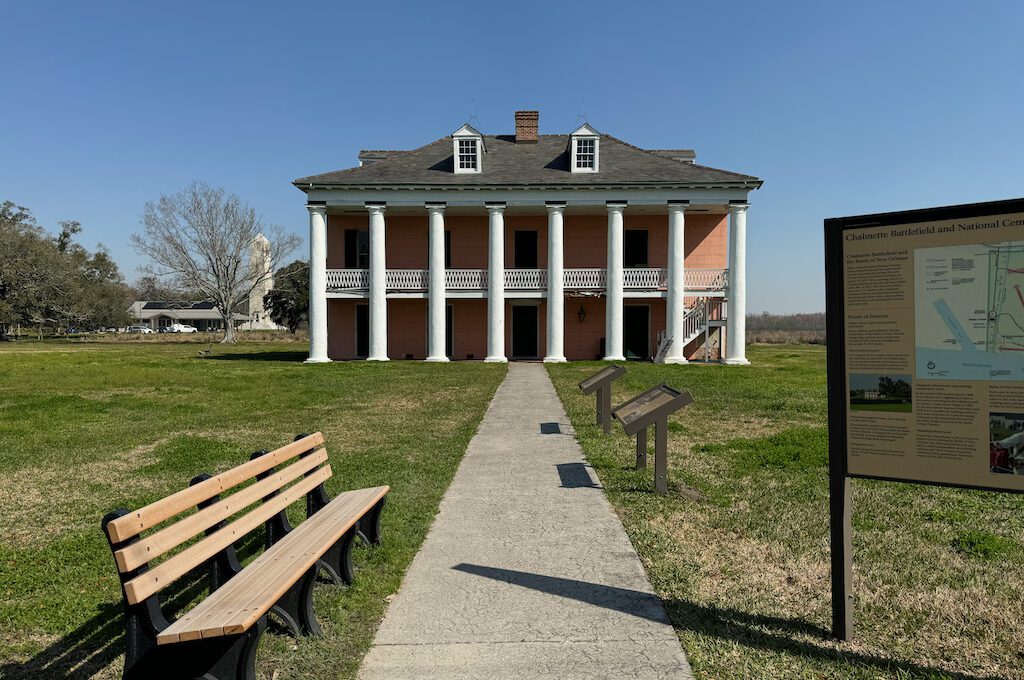
Afterward, we ventured onto the battlefield itself, where a loop can be completed either on foot or by vehicle.
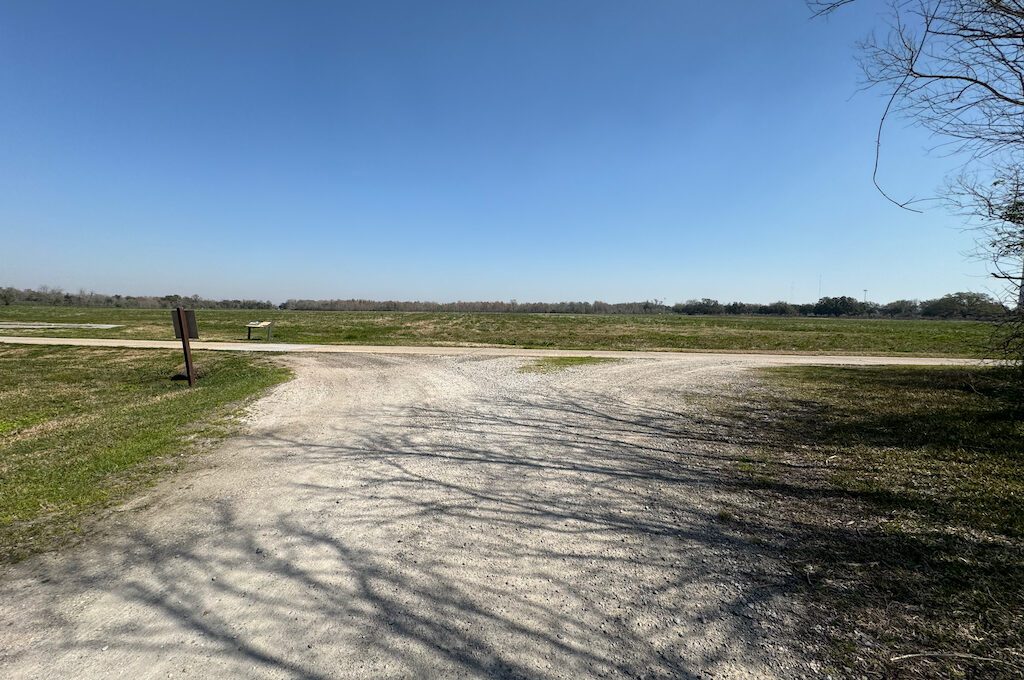
While navigating the loop by car is convenient, with designated parking lots available for stopping and reading interpretive panels, I suggest taking advantage of pleasant weather to explore on foot.
Walking allows for a more immersive experience, providing an opportunity to appreciate the historical significance of the battlefield while also getting some steps in.
Eventually, we made our way over to the National Cemetery, which was built during the Civil War, and has veterans ranging from the War of 1812 all the way through more modern wars, including Vietnam.
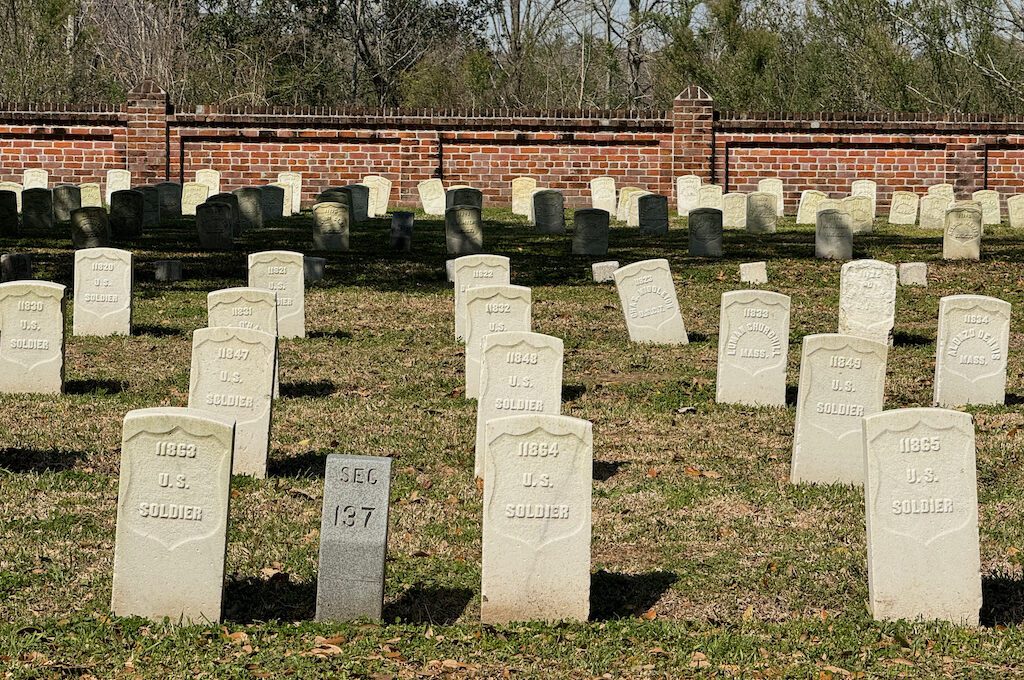
It’s a beautiful national cemetery, although if you don’t want to do so much walking I would recommend you to do the loop and go back to your car and then drive over to this area so that you can drive up and down the cemetery.
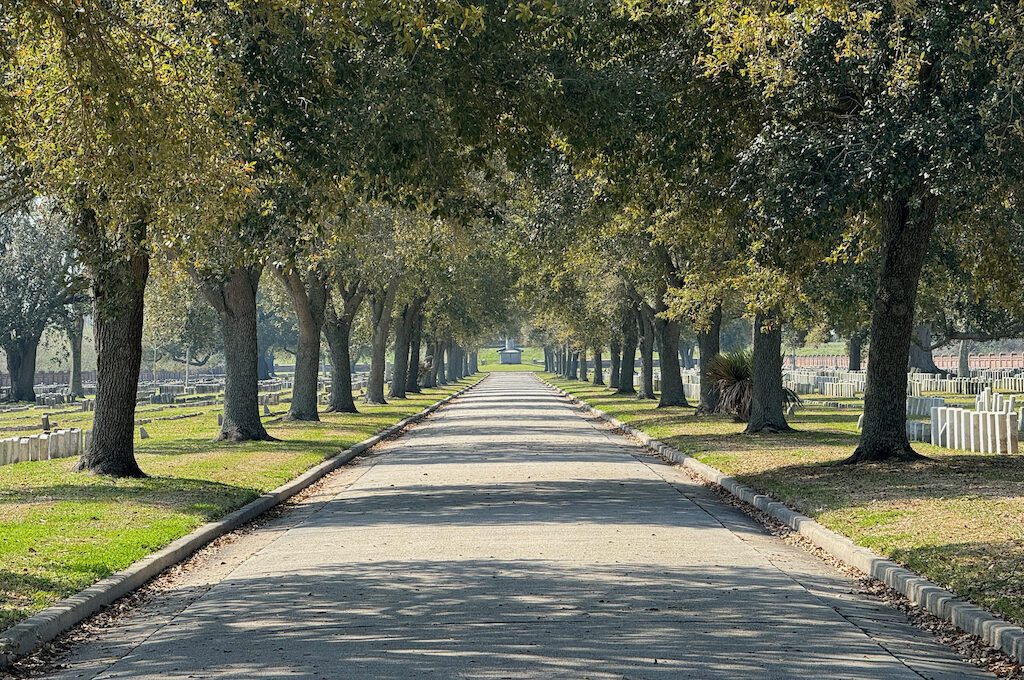
In addition to the marked graves, there are numerous unmarked graves of unknown soldiers. As you explore, you’ll notice tombstones in various forms, reflecting the diverse backgrounds and sacrifices of those who fought here.
I recommend taking a leisurely stroll through this expansive cemetery, reflecting on the courage and sacrifices displayed by these men over the centuries.
One fascinating aspect of the battlefield is the presence of a Union Jack flag, which piques curiosity given the prevailing notion that losers aren’t typically honored in such settings.
Despite the overwhelmingly one-sided victory for the United States, the Union Jack flies as a symbol of remembrance. This gesture highlights a broader theme of honoring the humanity of fallen soldiers, even those from opposing sides.
It’s an intriguing contrast often discussed in the context of Confederate memorials, but encountering a similar scenario involving a foreign power adds a new perspective on historical remembrance and commemoration.
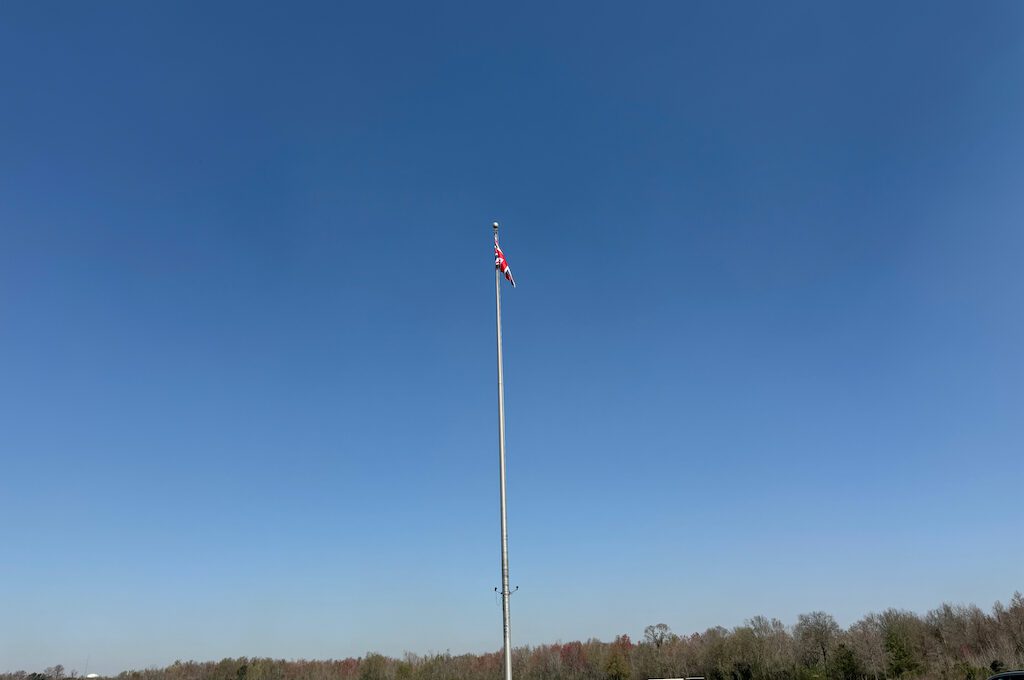
After our time in the cemetery, we continued along the loop until we reached the reconstructed ramparts area. This spot fascinated me, as it allowed me to envision the intense battle that once unfolded here, with thousands of British soldiers advancing toward the ramparts while diverse American forces unleashed their rifles and cannons, repelling the onslaught.
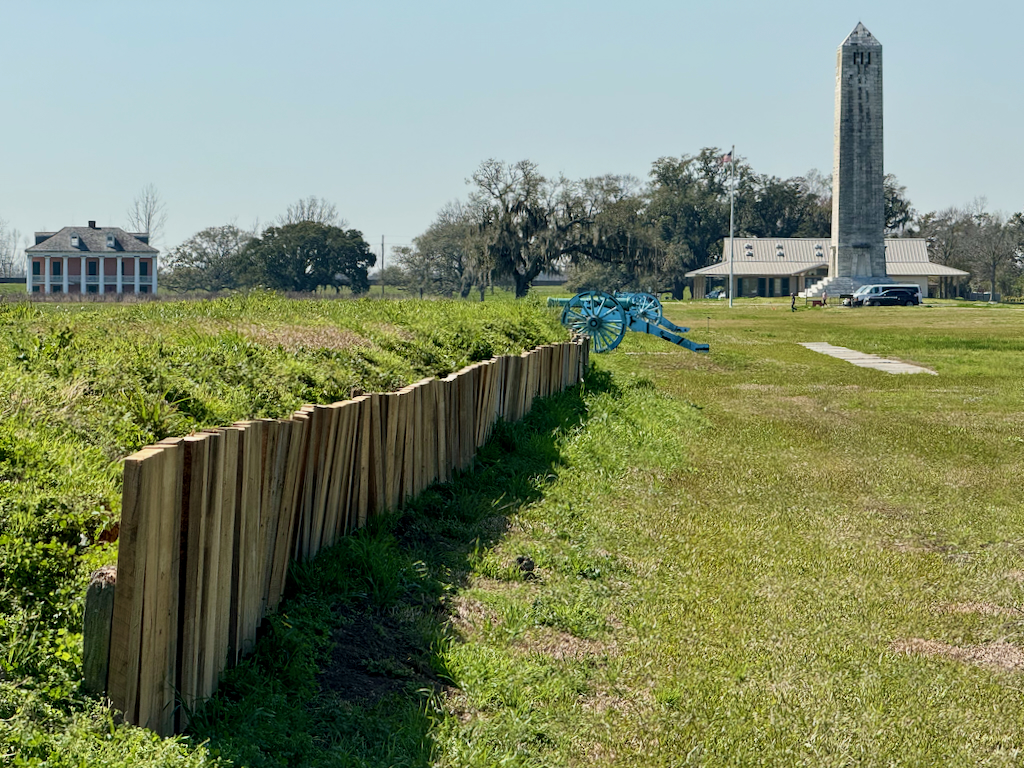
The sight of cannons on display transported me back to that pivotal moment in history. While the battlefield may appear barren in other areas, this reconstructed section stands out as a highlight, offering a vivid glimpse into the dramatic events that unfolded centuries ago.
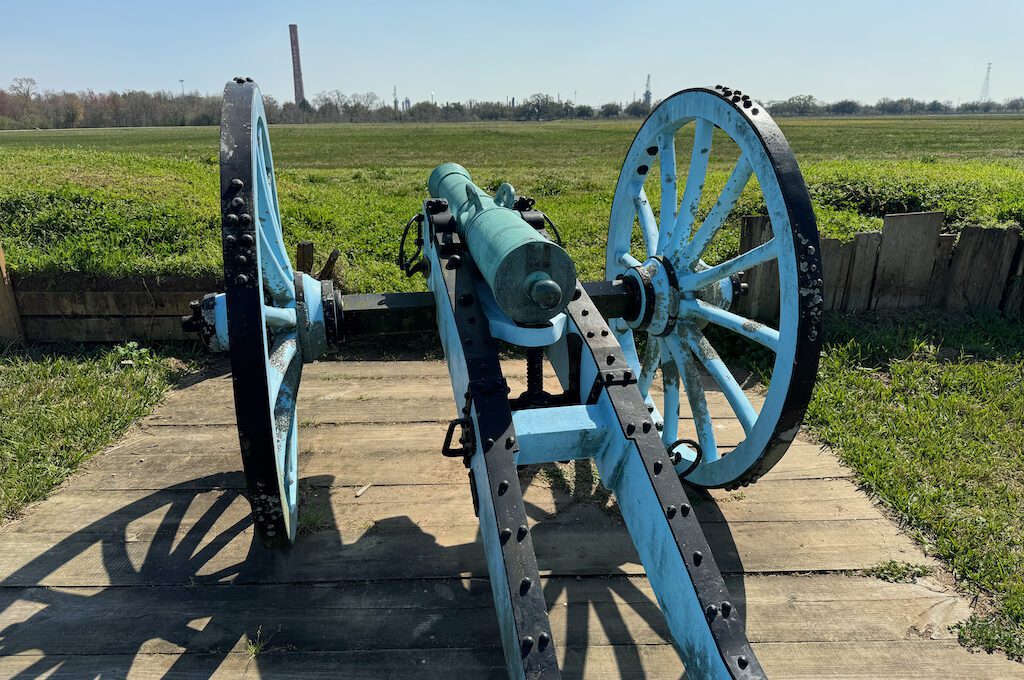
Upon reaching the monument itself, you’ll encounter a striking structure, tall and stout, which I found to be quite impressive.
While I’m unsure if it’s ever open to the public, you can approach it, climb the steps, and admire its design, perhaps capturing some memorable photos.
The monument pays tribute to Andrew Jackson and his troops, although its construction faced challenges before finally being completed in 1908. Originally intended to stand nearly a hundred and fifty feet tall, engineers opted to limit its height to 100 feet due to technical issues discovered during testing.
Final word
For history buffs, a visit to the Chalmette Battlefield is an absolute must. In my opinion, the Battle of New Orleans is one of the most underrated conflicts in terms of its impact on the country. Exploring the battlefield offers a unique opportunity to delve deeper into history, allowing you to vividly imagine the events that unfolded on this hallowed ground.
Daniel Gillaspia is the Founder of UponArriving.com and the credit card app, WalletFlo. He is a former attorney turned travel expert covering destinations along with TSA, airline, and hotel policies. Since 2014, his content has been featured in publications such as National Geographic, Smithsonian Magazine, and CNBC. Read my bio.

